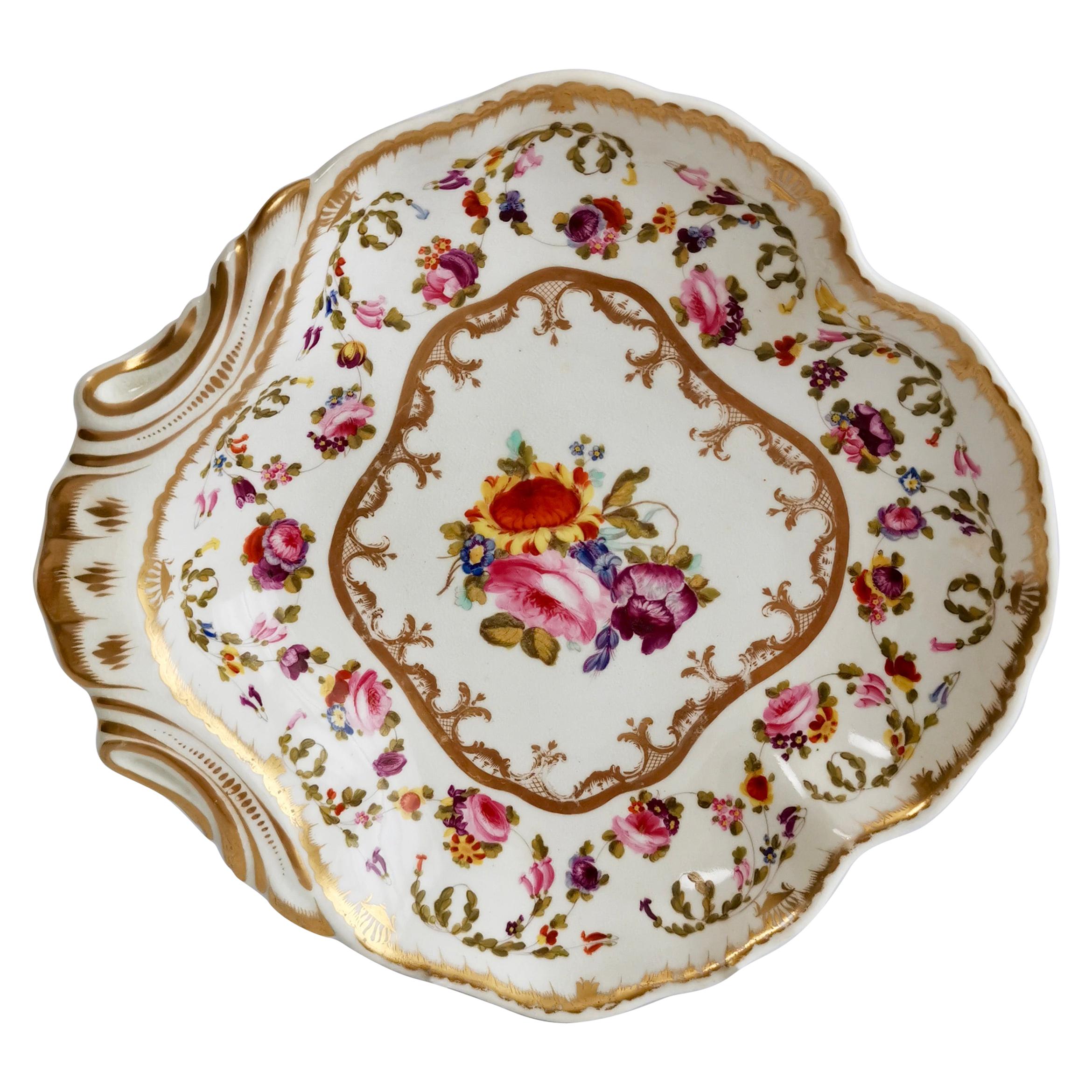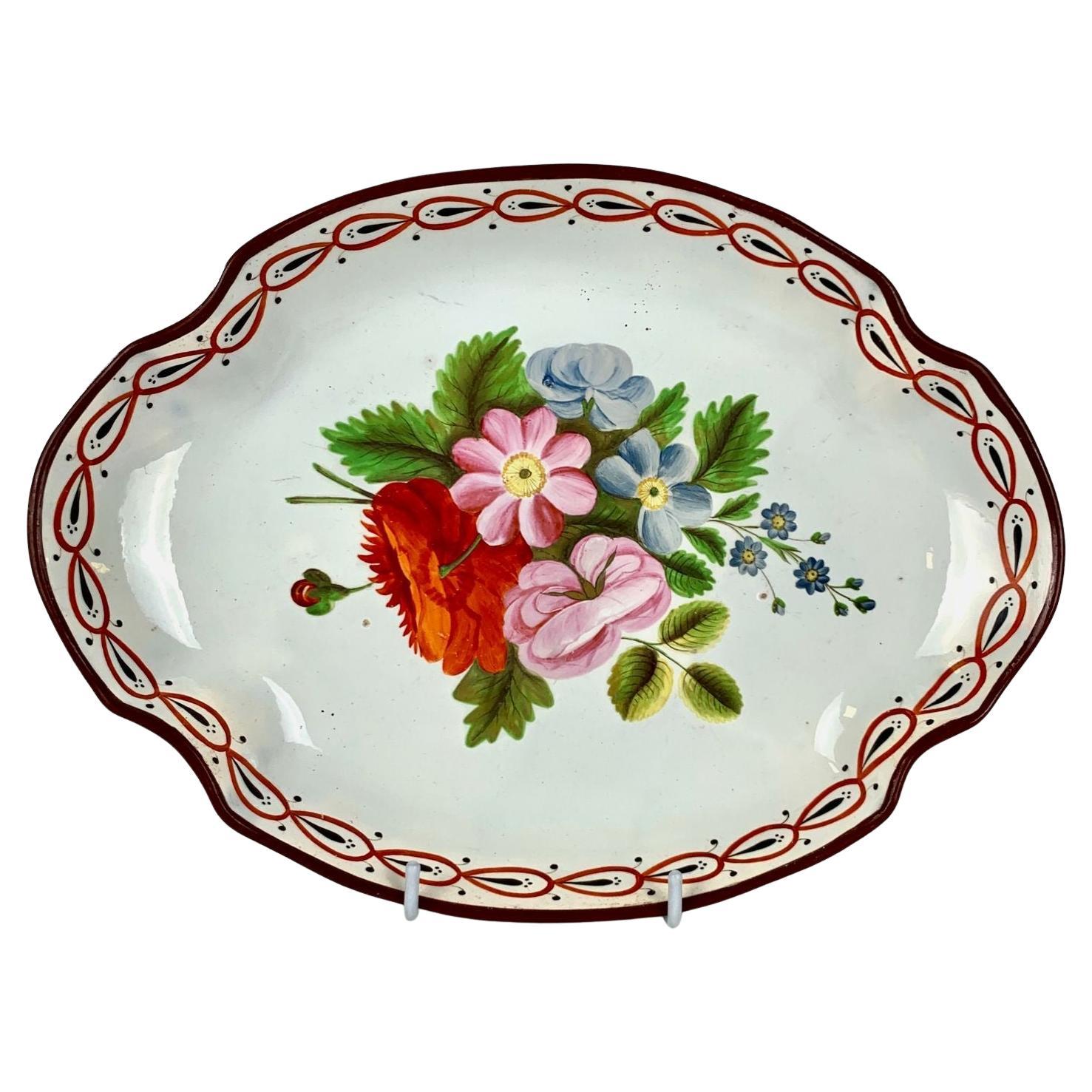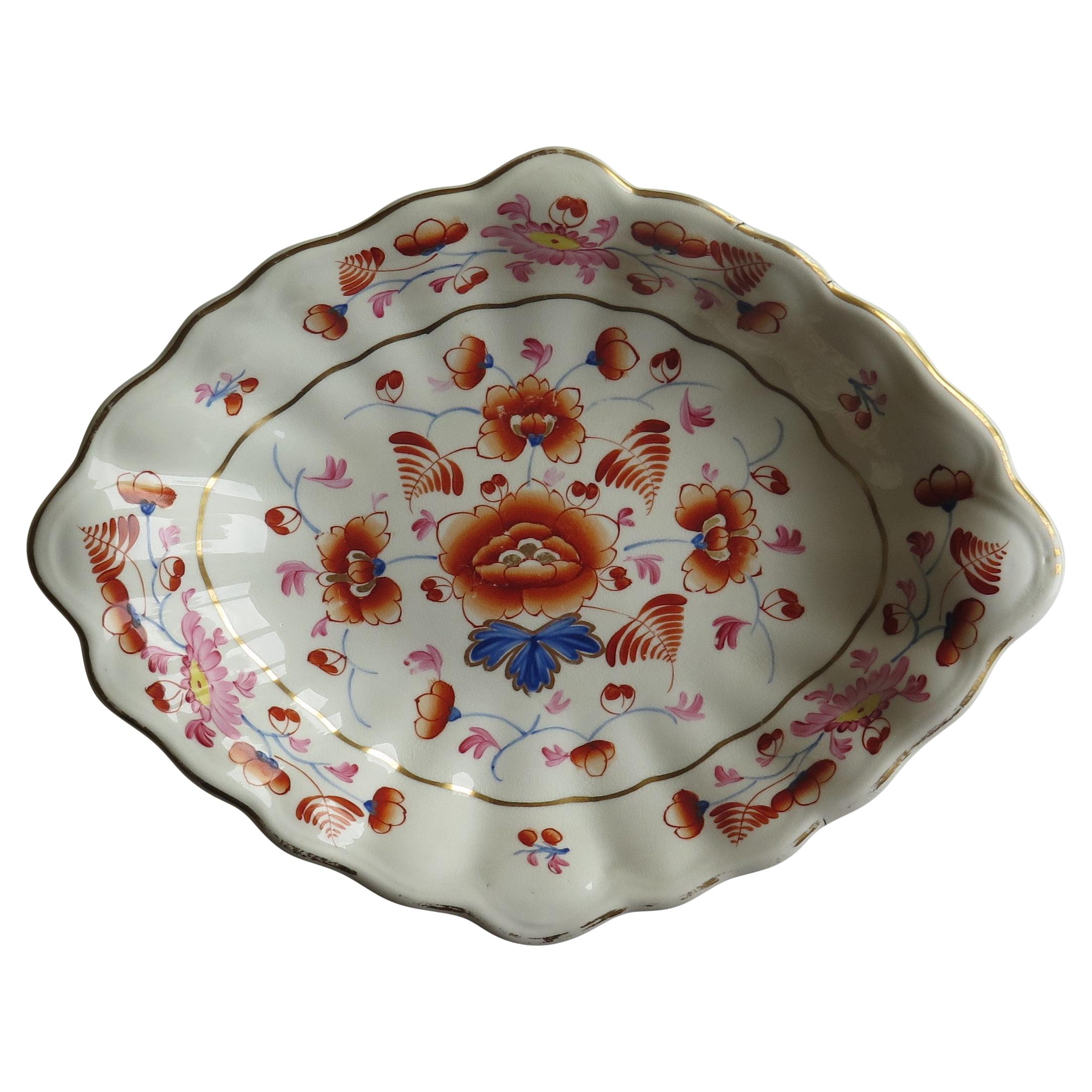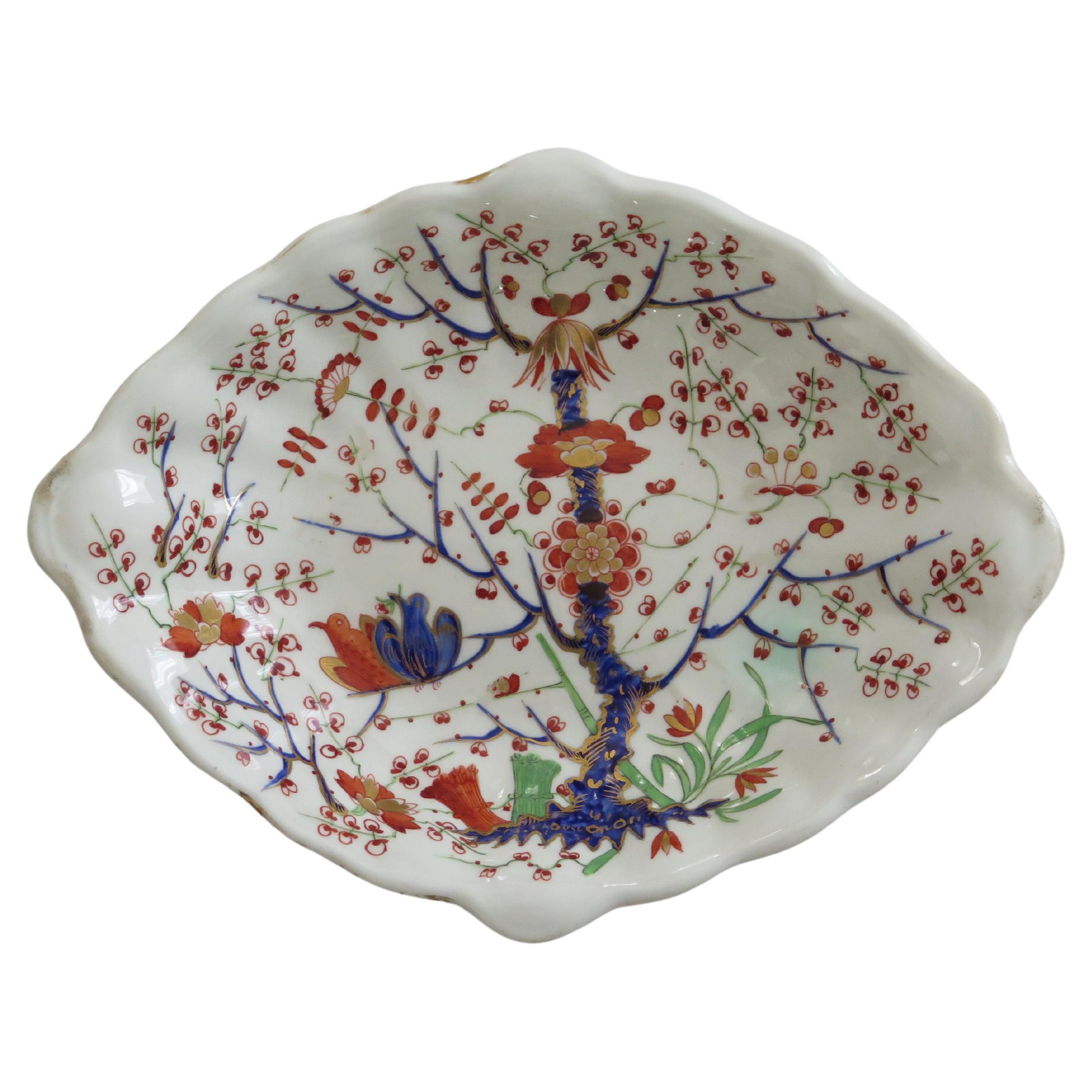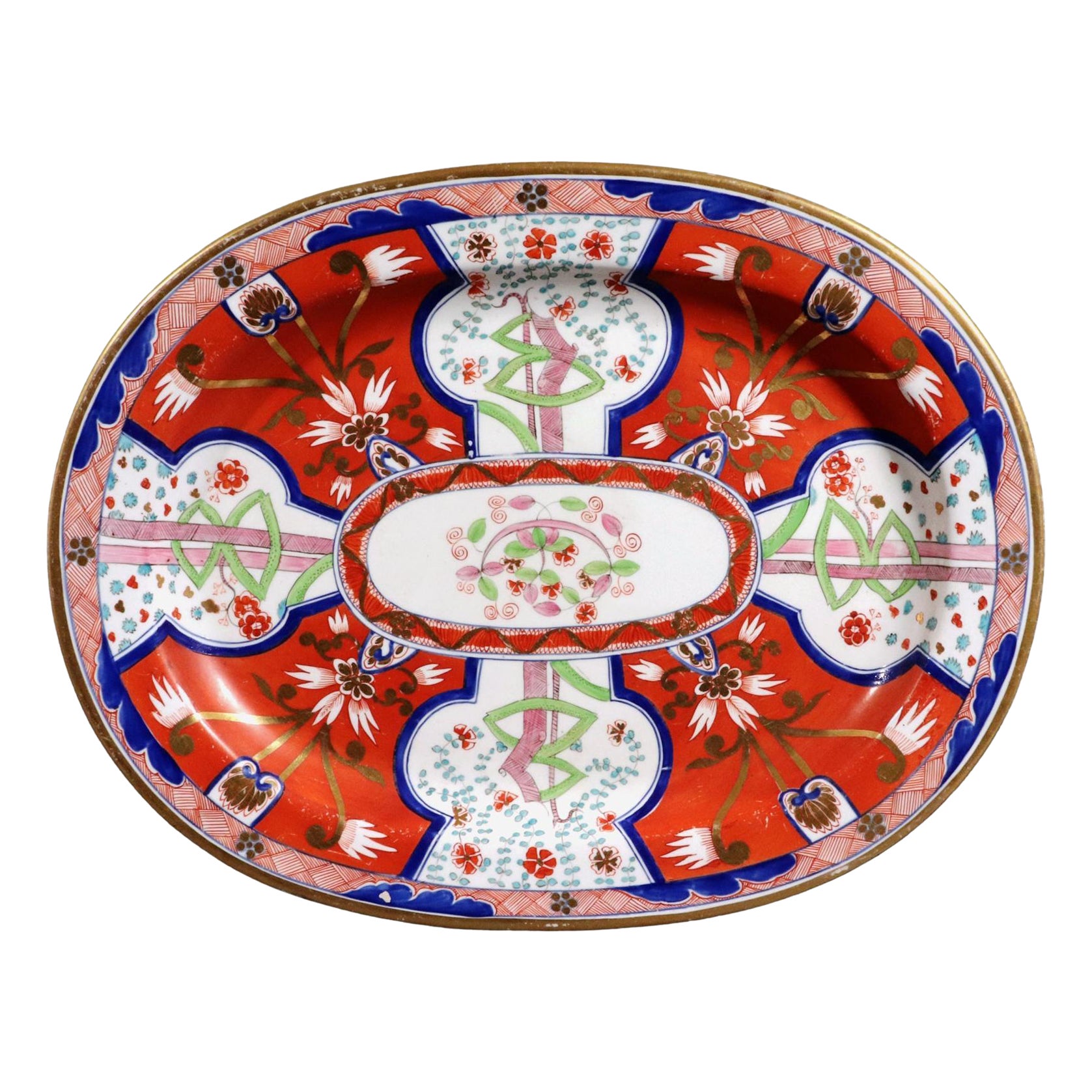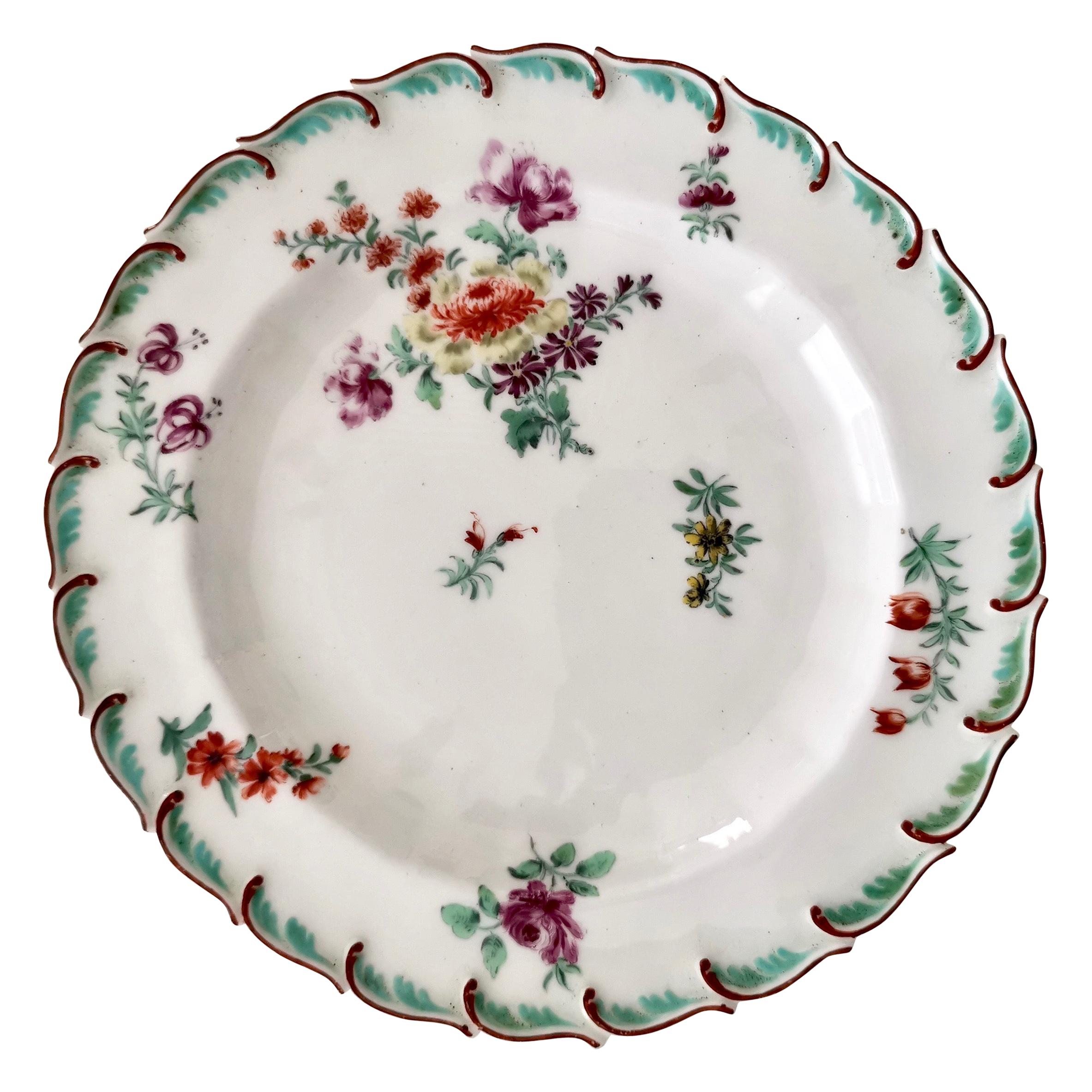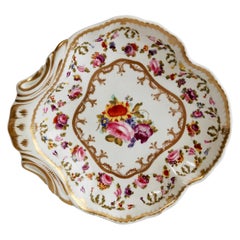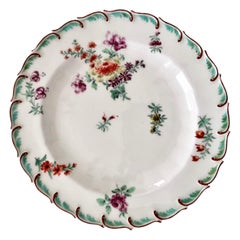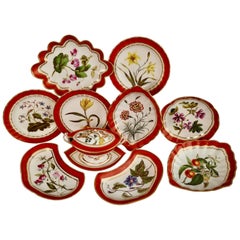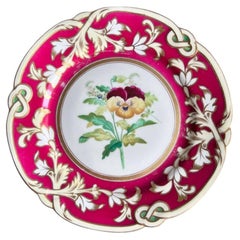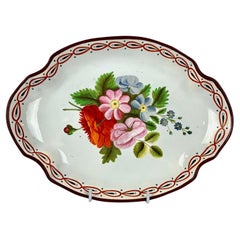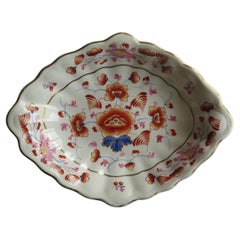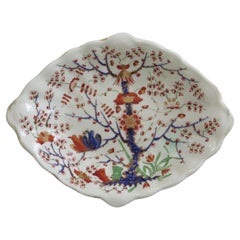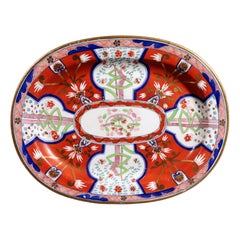Items Similar to Derby Kidney Dish, William Quaker Pegg, Scarlet Lychnis & Gentianella, c1814
Want more images or videos?
Request additional images or videos from the seller
1 of 11
Derby Kidney Dish, William Quaker Pegg, Scarlet Lychnis & Gentianella, c1814
$1,800
$2,25020% Off
£1,365.80
£1,707.2520% Off
€1,561.67
€1,952.0920% Off
CA$2,514.11
CA$3,142.6420% Off
A$2,795.35
A$3,494.1920% Off
CHF 1,459.58
CHF 1,824.4720% Off
MX$34,026.22
MX$42,532.7820% Off
NOK 18,623.58
NOK 23,279.4720% Off
SEK 17,449.40
SEK 21,811.7520% Off
DKK 11,655.02
DKK 14,568.7720% Off
Shipping
Retrieving quote...The 1stDibs Promise:
Authenticity Guarantee,
Money-Back Guarantee,
24-Hour Cancellation
About the Item
This is a stunning and extremely rare kidney shaped serving dish made by Derby between about 1813 and 1815. The dish is painted with bright red and blue flowers by William Quaker Pegg, one of the most celebrated painters at Derby. The names of the flowers are neatly written in longhand on the back: "Scarlet Lychnis & Gentianella".
This dish would have belonged to a large dessert service, each piece of which would have a unique flower with the name written on the underside of the item.
The Derby Porcelain factory has its roots in the late 1740s, when Andrew Planché, a Walloon Huguenot refugee, started making simple porcelain toys shaped like animals in his back yard. In 1756 Staffordshire enameller William Duysbury and banker John Heath started a new porcelain factory with Planché and this was to grow out to the largest factory of its time, buying up the bankrupted Chelsea and Bow factories, as well as the stock of several other workshops including that of James Giles. The combination of various traditions, porcelain making skills and sophisticated clients enabled Duesbury to create one of the best porcelain factories of the 18th and 19th Centuries, which after many ups and downs is still operative today.
The dish is marked in red with the mark consisting Derby crown, crossed batons and a "D".
DOCUMENTATION: Several items of the same pattern (but different flowers) are shown on page 268 of "Derby Porcelain" by John Twitchett; more similar items in Quaker's hand are shown on page 93 of "Derby Porcelain 1748-1848 An Illustrated Guide" by John Twitchett.
CONDITION REPORT The dish is in excellent antique condition without any damage, repairs or crazing, and only some light wear as clearly visible in the pictures.
Antique British porcelain is never perfect. Kilns were fired on coal in the 1800s, and this meant that china from that period can have some firing specks from flying particles. British makers were also known for their experimentation, and sometimes this resulted in technically imperfect results. Due to the shrinkage in the kiln, items can have small firing lines or develop crazing over time, which should not be seen as damage but as an imperfection of the maker's recipes, probably unknown at the time of making. Items have often been used for many years and can have normal signs of wear, and gilt can have signs of slight disintegration even if never handled. I will reflect any damage, repairs, obvious stress marks, crazing or heavy wear in the item description but some minor scratches, nicks, stains and gilt disintegration can be normal for vintage items and need to be taken into account.
There is widespread confusion on the internet about the difference between chips and nicks, or hairlines and cracks. I will reflect any damage as truthfully as I can, i.e. a nick is a tiny bit of damage smaller than 1mm and a chip is something you can easily see with the eye; a glazing line is a break in the glazing only; hairline is extremely tight and/or superficial and not picked up by the finger; and a crack is obvious both to the eye and the finger. Etcetera - I try to be as accurate as I can and please feel free to ask questions or request more detailed pictures!
DIMENSIONS: 25.5 X 19.5cm (10" X 7.75"); 4cm (1.5") high.
- Creator:Derby (Maker),Quaker Pegg At Derby (Artist)
- Dimensions:Height: 1.5 in (3.81 cm)Width: 7.75 in (19.69 cm)Depth: 10 in (25.4 cm)
- Style:Regency (Of the Period)
- Materials and Techniques:
- Place of Origin:
- Period:
- Date of Manufacture:ca 1814
- Condition:Wear consistent with age and use. in excellent antique condition without any damage, repairs or crazing, and only some light wear.
- Seller Location:London, GB
- Reference Number:Seller: A-DER771stDibs: LU4805143342332
About the Seller
5.0
Gold Seller
Premium sellers maintaining a 4.3+ rating and 24-hour response times
Established in 2016
1stDibs seller since 2019
226 sales on 1stDibs
- ShippingRetrieving quote...Shipping from: London, United Kingdom
- Return Policy
Authenticity Guarantee
In the unlikely event there’s an issue with an item’s authenticity, contact us within 1 year for a full refund. DetailsMoney-Back Guarantee
If your item is not as described, is damaged in transit, or does not arrive, contact us within 7 days for a full refund. Details24-Hour Cancellation
You have a 24-hour grace period in which to reconsider your purchase, with no questions asked.Vetted Professional Sellers
Our world-class sellers must adhere to strict standards for service and quality, maintaining the integrity of our listings.Price-Match Guarantee
If you find that a seller listed the same item for a lower price elsewhere, we’ll match it.Trusted Global Delivery
Our best-in-class carrier network provides specialized shipping options worldwide, including custom delivery.More From This Seller
View AllBloor Derby Shell Dish, White, Floral Sprigs Moses Webster, Regency, 1820-1825
By Bloor Derby
Located in London, GB
This is a beautiful one-handled dessert serving dish or "shell" dish made by Derby between about 1820 and 1825 in the Regency era and decorated by Moses Webster. These dishes were to...
Category
Antique 1820s English Regency Serving Bowls
Materials
Porcelain
$460 Sale Price
20% Off
Free Shipping
Chelsea Plate, Feather Moulded with Flowers, Red Anchor Mark, ca 1755
By Chelsea Porcelain
Located in London, GB
This is a beautiful plate made by Chelsea in circa 1755, which is known as the "Red Anchor" period of the factory.
Chelsea was one of the very early adopters of porcelain in the British china industry. Founded in 1744 the Chelsea pottery was for about 40 years the leading maker of fine chinaware, excelling in their sense of style, perfection and constant innovation and inspiring many following generations of china makers.
The company was started by French silversmith Nicholas Sprimont and you can see the influence of the French style of silverware...
Category
Antique 1750s English George II Dinner Plates
Materials
Porcelain
$916 Sale Price
20% Off
Free Shipping
Derby Porcelain Part Dessert Service, Red Botanical, John Brewer, 1795-1800
By John Brewer, Crown Derby
Located in London, GB
This is a stunning part-dessert service made by Derby between about 1795 and 1800, painted with named botanical studies by John Brewer. The service consists of a lidded sauce comport on a stand, two kidney shaped dishes, two lozenge shaped dishes, one lozenge shaped low footed comport...
Category
Antique 1790s English George III Dinner Plates
Materials
Porcelain
$9,200 Sale Price / set
33% Off
Free Shipping
Samuel Alcock Porcelain Plate, Maroon Staffordshire Border with Pansy, 1854
By Samuel Alcock & Co.
Located in London, GB
This is a striking plate with the popular "Staffordshire" moulding, a deep maroon rim with bold beige and white foliage, and a large hand painted yellow and purple pansy in the centr...
Category
Antique 1830s English Rococo Revival Porcelain
Materials
Porcelain
$284 Sale Price
20% Off
Free Shipping
Worcester Porcelain Plate, Flower Sprays by James Giles, ca 1770
By 1st Period Worcester Dr. Wall, James Giles
Located in London, GB
This is a beautiful large plate made by Worcester in about 1770 in their First or the "Dr Wall" period. The plate has a pleasing slightly lobed rim, a white ground and beautifully pa...
Category
Antique 1770s English George III Porcelain
Materials
Porcelain
Coalport John Rose Plate, Abundant Flowers, T. Baxter Studio, ca 1805 (2)
By Coalport Porcelain, Thomas Baxter
Located in London, GB
This is a stunning and extremely rare plate made by Coalport around the year 1805, and decorated in the London studio of Thomas Baxter.
We have one more of these plates in stock, pl...
Category
Antique Early 1800s English George III Porcelain
Materials
Porcelain
You May Also Like
Antique English Staffordshire Pearlware Dish Hand Painted Flowers Circa 1820
By Staffordshire
Located in Katonah, NY
This antique English Staffordshire Pearlware dish, made circa 1820, features a beautiful botanical bouquet of hand-painted garden flowers in pink, blue, orange, and yellow.
The scall...
Category
Antique Early 19th Century English Country Decorative Dishes and Vide-Poche
Materials
Pearlware
Georgian Derby Porcelain Serving Dish or Bowl Hand-Painted, Fully Marked Ca 1815
By Derby
Located in Lincoln, Lincolnshire
This is a good oval shaped serving dish or bowl, made by the Derby factory, hand painted and gilded in a free flowing floral pattern, during the reign of George 111 in the early 19th century, circa 1815.
This is a well potted oval shaped dish or bowl with a vertically fluted and moulded side edge and rim, sitting on a low foot.
The piece is beautifully hand decorated in a free flowing manner, in one of Derby's Imari style floral Patterns, with enamels of cobalt blue, burnt orange, pink and yellow, all in varying shades. It has then been hand gilded, with gold detail to some of the flowers, blue leaf, the inner border and the outer rim.
The dish has the early Derby...
Category
Antique Early 19th Century English Georgian Serving Bowls
Materials
Porcelain
Georgian Derby Porcelain Platter or Dish Partridge Pattern hand painted, Ca 1815
By Derby
Located in Lincoln, Lincolnshire
This is a very good antique porcelain platter or dish, made by the Derby factory, hand painted and gilded in the beautiful Partridge Pattern,...
Category
Antique Early 19th Century English Georgian Platters and Serveware
Materials
Porcelain
Regency Coalport Porcelain Dish Painted with the Dollar Pattern
By Coalport Porcelain
Located in Downingtown, PA
Coalport Porcelain Dish Painted with the Dollar Pattern,
Circa 1810
The large oval Coalport porcelain dish is painted in the Dollar Pattern which is a ...
Category
Antique Early 19th Century English Regency Platters and Serveware
Materials
Porcelain
Chelsea Red Anchor Porcelain Dish Mid-18th Century England 1752-1756
By Chelsea Porcelain
Located in Katonah, NY
The wares of the Chelsea red anchor period (1752-1758), when this dish was made, are generally thought to be the finest work produced by the factory...
Category
Antique Mid-18th Century English Porcelain
Materials
Porcelain
Coalport, 'Lungwort', Antique Botanical Serving Platter, U.K., circa 1830's
By Coalport Porcelain
Located in Chatham, ON
COALPORT (Attributed) - 'Lungwort' - Antique ceramic single handled botanical serving platter with apple green borders and gilded decoration - featuring a hand painted floral specime...
Category
Antique Mid-19th Century British Victorian Platters and Serveware
Materials
Enamel, Gold Leaf
More Ways To Browse
Toy China
Antique Silver Dish Cross
Huguenot Silver
1800s Toys
Chelsea Dish
Crown Staffordshire Porcelain China
Antique Quaker Furniture
Royal Worcester Blue Antique
Silver Compendium
Vintage Green Coffee Cups
Antique Porcelain Shoes
China Dinnerware Set
Dolphin Foot
Limoges Cobalt Blue
Limoges France Cup And Saucer
Minton Plate Blue
Vintage 1 Cup Glass Measuring Cup
Worcester Porcelain Service
